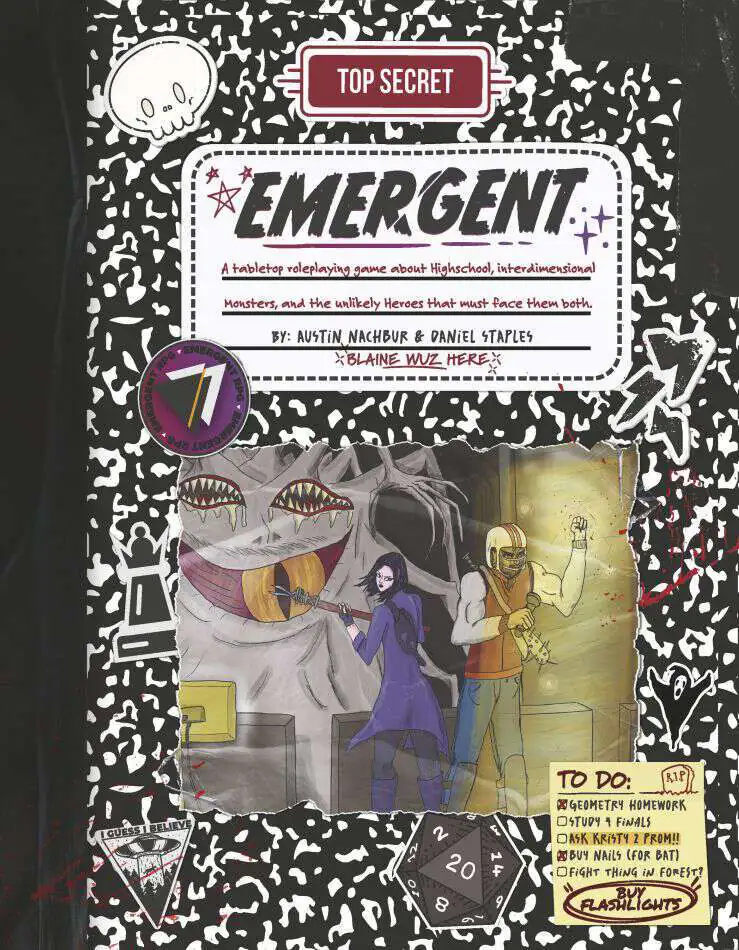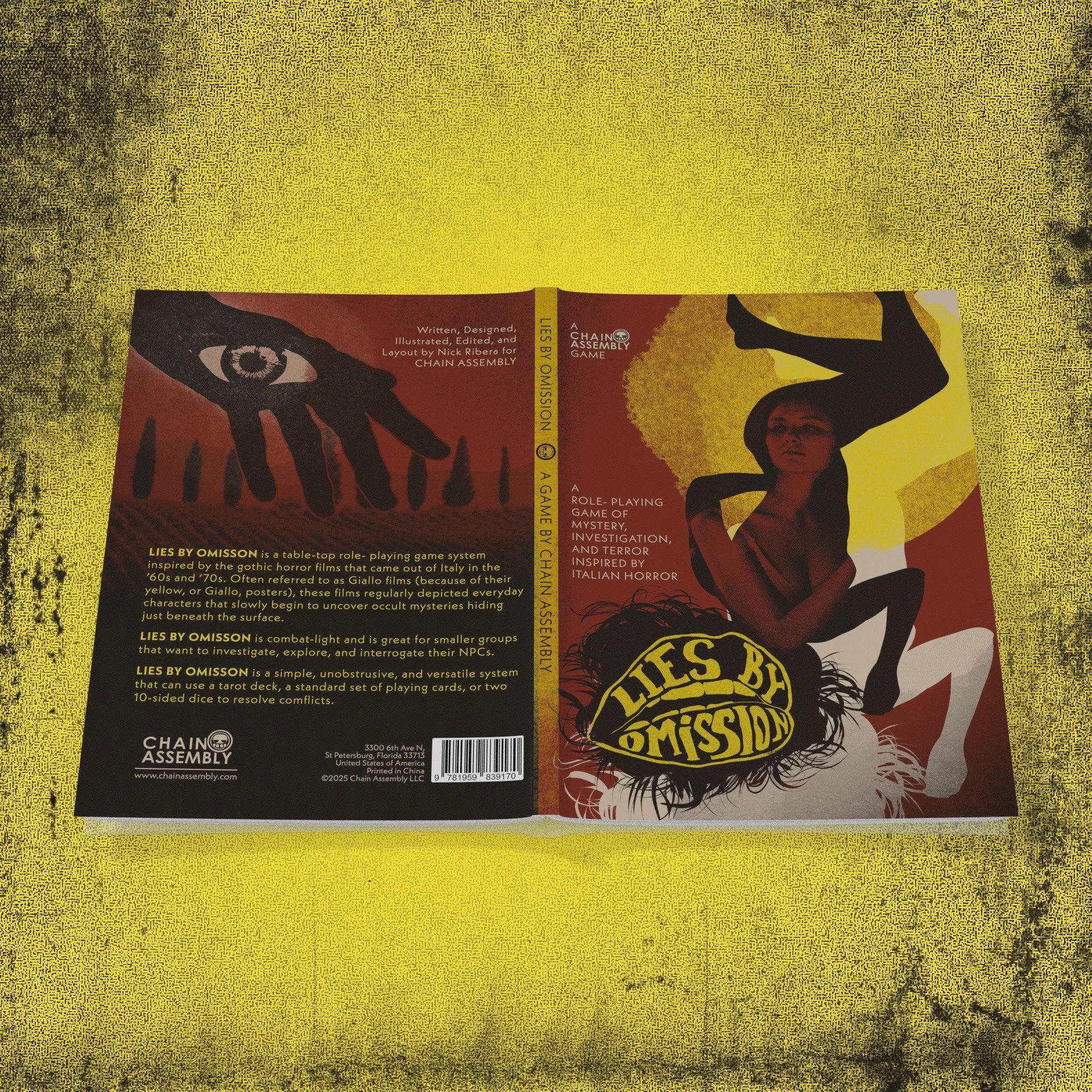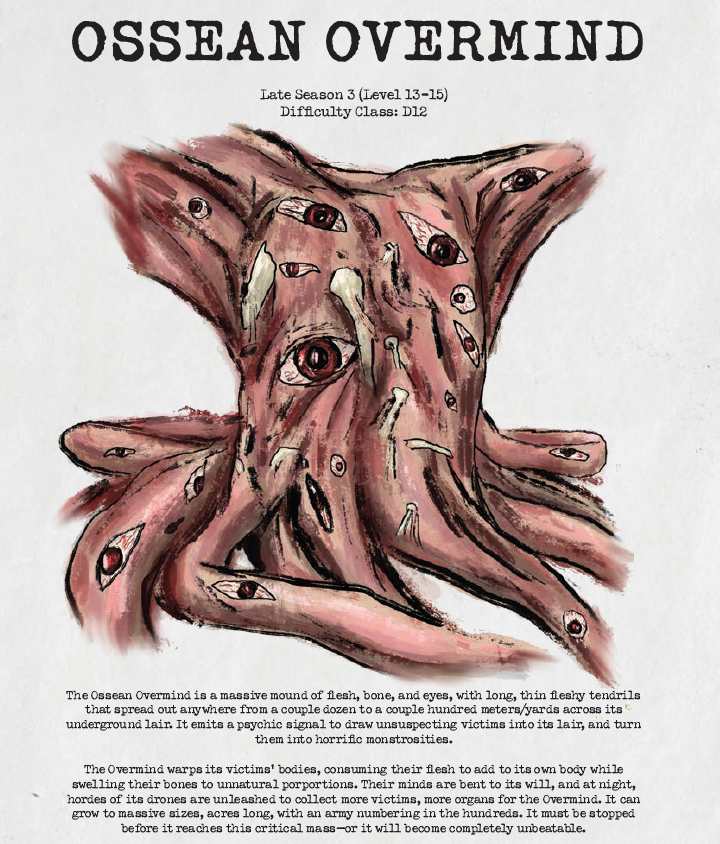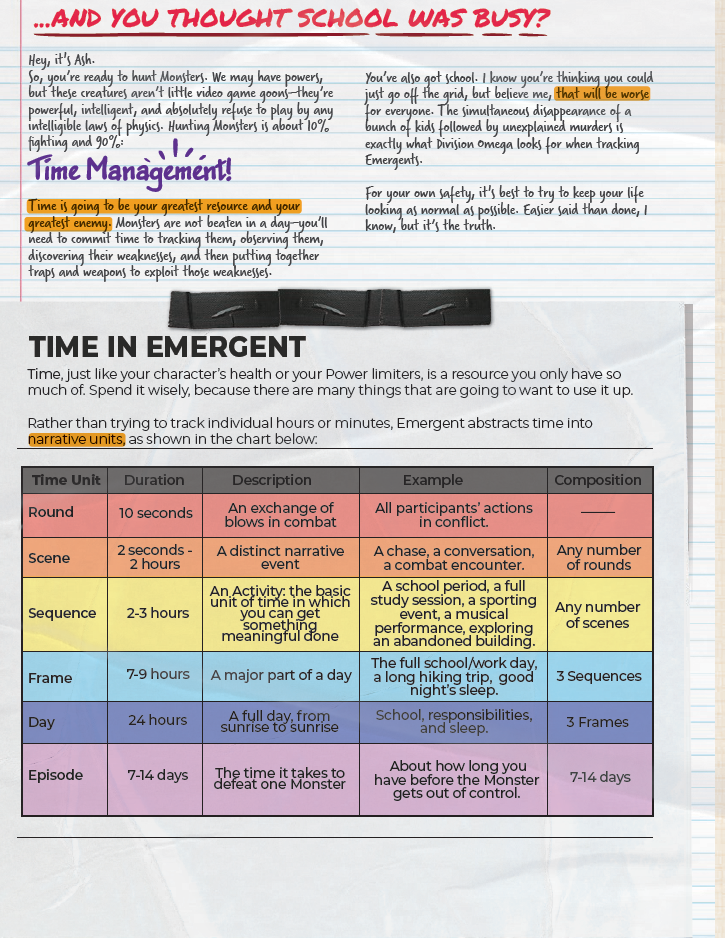What’s The Story, Muthur?
To the point, tabletop gaming
1970’s Italian Horror Mysteries! First Look at Lies by Omission & L’Isola Lacrime
LxO tries to capture the tone and aesthetics of 1960s and 70s Italian Giallo films - thrillers that mixed mystery, horror, and eroticism, often featuring stylized violence, psychological tension, and vivid visual design.
By JimmiWazEre
Opinionated tabletop gaming chap
TL;DR:
Lies by Omission is a rules-lite, tarot-driven horror RPG steeped in the mood of 1960s–70s Italian Giallo cinema. It’s gorgeously presented and thematically confident, with evocative art, clever pacing tools, and a distinct cinematic flair. If you’re into atmospheric, story-first experiences and Italian horror vibes, it’s absolutely worth a look. If you prefer games where mechanics drive tension and consequence, this one might not be for you.
Disclaimer
A few months ago, I was sent the physical press kit for Lies by Omission (LxO) by the creator with a request that I might feature it in an upcoming post. At the time of receipt, this kit represented a work in progress state of the game, with certain elements missing and others awaiting their final polish. As per usual, I have not received financial incentive to write nice things.
Finally, it’s well worth noting that I’ll be presenting this in a ‘first look’ format as I’ve not played LxO yet, so don’t go thinking that this a review :)
What Is Lies by Omission?
Just the Facts
| Type | TTRPG |
| Theme | Giallo, Horror |
| Players | 2-5 |
| Ages | Explicitly Adult |
| Dev | Chain Assembly |
| Pages | 68 |
Created and edited by Nick Ribera and Leslie Haas of Chain Assembly and launched on Gamefound just the other day, Lies by Omission (LxO) and it’s accompanying campaign setting; L’isola Lacrime achieved their modest funding goal of $1,000 in a mere 7 minutes - that’s roughly $2.40 per second, and a pretty decent salary by anyone’s reckoning.
More importantly, it demonstrates the clear appeal that the project has managed to generate against a backdrop of so many otherwise ignored indie RPGs. Congratulations Chain Assembly!
In fact, as of the time of writing, with 26 days to go until the Gamefound completes, it’s currently sitting on $9.9k from 120 backers. Plenty of time left for you to join the crowd and get involved if you like the sound of it.
What’s it Trying to Do?
Core Rules
Fundamentally LxO tries to capture the tone and aesthetics of 1960s and 70s Italian Giallo films - thrillers that mixed mystery, horror, and eroticism, often featuring stylized violence, psychological tension, and vivid visual design.
I must confess, it’s not a horror sub-genre that I’m particularly knowledgeable about - but despite this, I was surprised by how familiar I was with the key cultural ingredients which carry the game forwards, to the extent that I can’t imagine that I’d have any problems running it.
From my readthrough, it’s clear to me that Ribera and Haas are trying to double down on these striking vibes whilst attempting to offer a rules-lite framework for the GM (Director) to operate from. The books, props, even the suggested Spotify playlist all serve well to boil that theme into a juicy stew and then inject it directly into your face, whilst the simple game mechanics on the players side seem to want to stay out of the way as much as possible.
This manifests as a very mechanically light, narrative focused game. I get the impression that it’ll feel less like playing a gamey game in the traditional RPG sense, and more about inhabiting a mystery story that’s already partially written, with the mechanics as more of a faint pulse beneath the surface rather than a driving engine.
L’isola Lacrime
In addition to the core rules, there’s a campaign setting; L’isola Lacrime, which takes place on an island in the Mediterranean sea. This setting provides the GM with a bunch of mysteries which all link together, combining a wealth of locations, NPCs, factions, events into a cohesive whole which could be used piecemeal for a one shot, or over the course of a sandbox style campaign.
As with the core rules, the campaign setting maintains the style and vibes of Giallo films; strange locals, secretive institutions, and a lingering sense of something beautiful yet rotten lurking just out of sight.
What Stands out to Me?
Action Scenes
LxO’s “Action Scenes” use a structure that will feel familiar to anyone who’s played Forged in the Dark games. Essentially over the course of a number of granular challenges, the player decides how they’re going to resolve them in turn. The GM then converts the players intentions into a specific stat to test against. The overall objective is to achieve a set number of successes before reaching too many failures. I’ve written about this mechanic in the form of progress clocks before, and I like it a lot.
It’s a clean way of providing a clear sense of pacing and tension without resorting to complexity, a smart and cinematic mechanic if you will. It mirrors the rhythm of a thriller montage: each draw raises the suspense and pulls the group toward a satisfying and earned climax.
For a game built on mood and narrative flow, I happy to go on record as saying that it genuinely complements its cinematic ambitions.
Confident and Thematic Artwork
Visually, LxO is a triumph. The artwork is striking from the front cover onwards, using a desaturated palette of washed-out reds, greys, and yellows that instantly evokes the faded glamour of 1960s and 70s cinema posters. The choice of fonts and layout work in concert to reinforce that era’s aesthetic, right down to the slightly grainy print texture that makes it feel like a lost artifact from an Italian art-house.
The black and white illustrations and photography are equally effective, often depicting eerie, half-familiar scenes — a discarded toy doll caught mid-blink, a figure just out of focus, a face obscured by shadow. It all feels intentionally off-kilter, capturing the unsettling, dreamlike tone that defines the genre.
Fans of Giallo will find a lot of joy in simply flipping through these books and taking in the visual tone, and in terms of setting the scene, it accomplishes this wonderfully.
Story Tracks
Another mechanic I like is the use of Story Tracks. These are essentially progress bars that help the Director manage the game’s pacing and trigger key events as the investigation unfolds. Each track ties to a specific narrative thread, ticking forward when players make discoveries or complete actions.
Once a track fills, a related event or scene is triggered, often adjusting the games difficulty via it’s core mechanic or unlocking new information. It’s a simple but effective tool that gives the GM a tangible way to measure story progression without having to improvise every beat.
GMs generally have a lot to get right in games, and pacing is a big one. A tool like this that explicitly codifies the structure of the adventure is a fantastic inclusion which gives the GM a little more much needed break from heavy cognitive load.
Potential Friction Points
These are the parts of LxO where either I think something missed the mark, or where the game has intentionally drawn a line in the sand and said “I am designed for people who like X, not Y” (and unfortunately, I happen to be team “Y”). That being said, as ever, I’m acutely aware that I am just a peculiar little dude from Yorkshire, and just because something works or doesn’t work for me, doesn’t mean that you’ll feel the same way.
To borrow a phrase; ‘your mileage may vary’. So I’m gonna call it like I see it, and I will be genuinely happy if the following points describe the kind of game that you’ll enjoy :)
Tarot Based Core Mechanic
At the heart of Lies by Omission lies an ostensibly tarot-based resolution system. The players share a single tarot deck composed from the minor Arcana cards known as the “Dread Deck,” drawing cards up to their relevant stat to resolve actions instead of rolling dice. Drawn face-up cards represent success; face-down cards represent failure. The tension builds as the balance of the deck shifts over time, simulating the rising dread of the story as the Director shuffles more face down cards into the deck in response to game events.
It’s an elegant idea on paper, but in practice the tarot’s symbolism and imagery never actually factor into play, they’re only used as binary tokens. The result is a mechanic that looks striking on the table and is definitely in line with the game’s tone, but feels functionally indistinguishable from sticking your hand in a bag and blindly drawing out pieces of paper marked ‘success’ or ‘fail’.
The Major Arcana cards, meanwhile, serve as markers of discovery rather than tools of play. Whenever the players uncover a key piece of information (By Golly! There’s a pack of werewolves living in the woods!), the Director awards them the most appropriate card that is available to abstractly represent that revelation. In theory, this gives the group a tangible record of what they’ve learned but in reality it’s little more than set dressing, as the cards serve no mechanical purpose other than as a kind of souvenir.
For me - it’s a big shame, because the game’s moody, surreal tone feels perfectly suited to genuine divinatory play where the meaning of each card might shape the fiction or foreshadow what’s to come. If I’m being honest - that’s what I was really excited for when I first heard about the game using a tarot deck for it’s core mechanic, and given all that it could have been, I can’t help but feel a little salty about this one.
But! And it’s a big but! It’s only fair to say that the game is very forward about being rules-lite, and that this simple ‘push your luck’ system certainly meets that criteria neatly and effectively.
Gated Social Flow
OK, so, in a typical investigative game, social encounters tend to flow organically — players follow their instincts, probe at interesting details, and test the boundaries of what NPCs know. LxO disrupts that rhythm by gating certain conversation topics behind Major Arcana cards, effectively requiring a “knowledge token” before a player can pursue a lead they may have already guessed at.
It’s meant to represent piecing together a mystery step by step, maybe I’m missing something, but I struggle to see the need for this codified process. In my games, players rarely ask about things they don’t know, and if they do, it hardly breaks immersion. This seems redundant?
On top of this, I have concerns that this codification risks turning dialogue into a faltering mechanical checklist rather than a naturally flowing conversation, somewhat counter to the ethos of your typical rules-lite game.
By no means is this a show stopper though - it’s a minor rule that can simply be house ruled away :)
Action Accountability
I have a suspicion that this will be the most contentious issue I’ve raised. You see, character death in LxO is a narrative beat that occurs only when the Director deems it dramatically appropriate. The rules even state that players effectively have “plot armour,” dying only when it serves the story and a replacement character is ready. In fact, in the section describing the core mechanic, the rules even suggest using literal misdirection and slight of hand to slyly tip the deck in the players favour if things are becoming too difficult for them.
It’s a choice that aligns with the game’s cinematic ambitions but IMHO strips away a sense of agency and consequence. Rather than the players shaping their fate through risk and tension, the Director decides when their moment ends though acts of fiat, and consequently must own all that GM conflict of interest too.
I want to be fair because I know that many players like this style of play - where the story arc comes first, and all is in service to it. In these circumstances, I can see how a main character’s death would create problems! For me though, I’m turned off by the implication that my actions don’t have clearly and fairly defined consequences, and as such, as a player, I feel the same way about this mechanic as I do about GMs fudging dice to keep players alive in games of D&D; a bit like I’m just along for the ride.
Do You Want to Know More?
In a dramatic turn of events, it seems that other people A) Exist, and B) have opinions about LxO also! Probably be well worth checking them out to see what they have to say!
Conclusion
Fans of the blog will know that I’m generally more drawn towards games with mechanics that significantly affect emergent narratives rather than ones where a pre-written story takes precedent over mechanical expressions of player agency, so something like LxO was realistically always going to be a very hard sell for me.
I’m torn though, because all said, the deeper I looked, the more I found to appreciate. It’s undeniably stylish, focused, and thematically bold with the kind of design that is supremely confident about the niche it occupies and who it is for. While I can’t see it becoming a regular fixture at my table, I can absolutely imagine running it as a one shot for narrative driven players already invested in the Giallo aesthetic.
I want to thank Nick again for sending this over, it takes guts to share your creative expression with the world and I have nothing but admiration for anyone who dares to do so. To the rest of you guys, if Lies by Omission sounds like it scratches your itch, then I would absolutely encourage you to check out the Gamefound and secure yourself a copy!
Hey, thanks for reading - you’re good people. If you’ve enjoyed this, it’d be great if you could share it on your socials - it really helps me out and costs you nothing! If you’re super into it and want to make sure you catch more of my content, subscribe to my free monthly Mailer of Many Things newsletter - it really makes a huge difference, and helps me keep this thing running!
Catch you laters, alligators.
What if Stranger Things, Buffy, X-Files, and X-Men Had a Baby? Emergent RPG: A First Look
In Emergent your protagonists have been touched by the interdimensional fallout that explodes into our world when the barrier between Earth and the ‘Transverge’ breaks down.
By JimmiWazEre
Opinionated tabletop gaming chap, who’s very tempted to rewatch Buffy now.
TL;DR:
Emergent is a superhero-horror RPG blending Stranger Things, Buffy, and X-Files vibes. Teens with powers fight monsters while juggling exams and social life. Cool dice mechanics, strong inclusivity, but potentially heavy prep and GM load. Looks promising if you enjoy structured, thematic play.
Disclaimer
Now then! Before we get into the weeds let’s be nice and clear with the disclosure: I don’t want to call this a review because I haven’t played Emergent yet. I’ve definitely not received any financial incentive to write about it, but I did receive a copy of the PDF to share my thoughts on without any actual obligation to do so.
I will be providing affiliate links though, in case Emergent seems like it might scratch your itch, and if you buy from those links I’ll get a small kickback at no additional cost to you.
I trust that we’re all savvy now? Let’s gooooo :)

What Is Emergent?
Just The Facts
| Type | TTRPG |
| Theme | Superhero, horror |
| Players | 2-6 (Including GM) |
| Ages | Teens and up |
| Dev | Shield Brothers Games |
| Pages | 425 |
Successfully kickstarted to the tune of $6,256 in 2024, Emergent has been available digitally since March 2025 and represents the first foray into the TTRPG space for Shield Brothers Games design duo Daniel Staples and Austin Nachbur, with support from graphic designer; Blaine Greenway and a small squad of dedicated Q&A leads and sensitivity readers.
Staples and Nachbur began collaborating in college after they realised that they were both separately developing similar things, and decided to combine their projects into one, Emergent is the product of that collaboration - 425 pages all written in a diegetic style, as if the reader is inheriting a set of responsibilities, passed down from the old guard to the new.
What’s it Trying to Do?
Emergent wears its inspirations quite proudly. Stranger Things, X-Men, Supernatural, IT, Alan Wake… For me personally, I can see Buffy the Vampire Slayer and the X-Files embedded into it’s DNA too. That’s a lot to be blending together so let’s unpack it a bit:
It’s a superhero game, in Emergent your protagonists have been touched by the interdimensional fallout that explodes into our world when the barrier between Earth and the ‘Transverge’ breaks down. This singularity gifts you with minor powers that set you ahead of other humans, but it also draws the attention of ‘Division Omega’, the sinister shadow-government organisation responsible for all the transdimensional meddling in the first place.
It’s a horror game. Unknowable monstrosities call the Transverge home, and when they break through they’re angry, confused, and hungry. If you sit back and let Division Omega handle it then they’ll probably discover you too. That’s bad, you don’t want to be dissected and turned into the bioweapons of tomorrow, so you’ve got no choice but to defeat these Lovecraftian horrors yourself, all quiet-like. The only problem? They’re stronger than you and they’re getting stronger all the time.
It’s an investigation game! In order to get the edge, you’re gonna need to spend some time on recon, maybe investigating local sites of monster activity to look for clues, or heading to the library to check out the section on strange mythical beasts? It’s only when you understand the vulnerabilities of the monster that you should attempt a final confrontation. You’re going to need a plan.
“Pass Your Exams. Slay a Monster. Make it Home for Dinner”
It’s a coming of age game. Protagonists in Emergent are teenagers, typically in high school or college, learning to be adults, learning to accept themselves, learning how to survive in society. You’ve got to contend with the monsters whilst juggling all that stuff too, otherwise you risk becoming stressed out, socially ostracised, or failing your exams! I don’t want you to think this is just fluff though, this stuff is part of the core gameplay loop. Outside of school, work, and extracurricular activities you have limited time in your week, less so when your companions are also available. How are you going to make the most of it?
What Stands Out to Me?
Inclusivity
One thing that stands out straight away reading through Emergent is how seriously it takes inclusivity. The rulebook doesn’t shy away from pointing out ugly issues present in the real world (racism, sexism, homophobia) but it’s clear that whether these appear at your table is a matter of group consent.
Even in the sample cast of ‘Emergents’ (the game’s name for the superhero protagonists), inclusivity is matter-of-fact. Ash, for instance, is trans, but that detail is presented alongside her love of painting minis and running the school newspaper. It’s baked into the fabric of the game.
The result is a book where allyship feels foundational instead of performative.
The Core Mechanic
I love a cool core dice mechanic, and I’ve not seen this one before. To succeed in a check, you need to roll under your attribute + skill stats. The GM modifies the difficulty by setting the dice size (using the standard set of seven as made popular by D&D).
So, an easy task might use a d4 (more chance of rolling low, which is good) and a nigh on impossible task might be a d20. In this way, the game has two clear variables at play: firstly, how good your character is at a given skill - represented by their stats. Secondly, how difficult that particular expression of the skill is.
I’m also a big fan of the rulebook loudly making the point that skills checks should only be called for when failure carries risk. As opposed to calling for checks willy-nilly at every little thing that PCs might attempt to do.
Time & Scheduling
Emergent takes and tracks the passage of time very seriously. Gary Gygax would be proud!
Each day is broken into nine playable chunks called “sequences”. Three of these are for sleep (usually skip these), and three are reserved for school (sometimes skip these, unless there’s an interesting reason not to). That leaves you three sequences for responsibilities (like work and after school clubs), monster hunting and downtime.
At character creation all the players work together to build a shared calendar so that they can see when the group is free. Ideally, the PCs schedules overlap in places to allow for group monster hunting! However, the rules do encourage some deliberate mismatching to encourage the occasional solo scene too.
This strikes me as quite novel for a game to explicitly map out the PCs schedule like this. Most just hand wave it away, and it’d be interesting to see if this formal structuring impacts the natural flow of gameplay.
You might be asking ‘Why wouldn’t the PCs just ignore school and focus solely on the monster hunting?’ Well, for the same reason that Buffy the Vampire Slayer still went to class - exams, grades, and social obligations matter. Skipping them risks failure, expulsion, or drawing the wrong kind of attention.
Emergent goes a step further. If characters start blowing off school or other commitments, they accumulate Stress, which can escalate into Strain. In play, these translate into stat debuffs and penalty giving special rules - tangible consequences for ignoring the pressures of everyday life.
Superpower Themes
One of Emergent’s most eye-catching features is its catalogue of distinct superpowers. Each is presented as a theme, categorised into frontliner (tank), informant (scout), runner (skirmisher), support (healer), or controller (crowd control). Within those, abilities are unlocked as your character advances using a nodal system that connects abilities. You can only unlock a new node if it links to one you’ve already taken.
While these powers are written in a directive style similar to how D&D lays out spells, Emergent also stresses that abilities should be applied creatively at the GM’s discretion. The intent is to push players to think beyond the exact wording on their character sheet and use their powers imaginatively in the fiction.
Where things get particularly juicy is with Power Weaving. At higher levels, characters can choose to “weave” a second power into their existing one, broadening their toolkit in a way that’s reminiscent of multiclassing in D&D. A Blink user, for example, might weave Psyche to combine teleportation with telepathy.
Crafting
Crafting works through a recipe structure. Players gather components, match them to a blueprint, and assemble the item. Blueprints cover melee weapons, spray weapons, explosives, armour, and traps and even include the option for your players to MacGyver up anything that seems reasonable like the ruddy A-Team!
It’s good to see that crafting has consequences. Items can carry defects, and repairing damaged gear may become necessary. Because each Monster has unique weaknesses, the crafting stage is often where strategy takes shape. Players brainstorm together, share resources, and prepare tools that can turn an impossible fight into a survivable one.
Time is the limiting factor. Crafting takes up Sequences on the daily calendar, so every nail bat, molotov, or improvised trap represents time that could have been spent studying, resting, or keeping up with work.
Potential Friction Points
Possibly Heavy GM Mental Load
There’s a risk that the game undermines its otherwise elegant core mechanic. The GM doesn’t just pick the base difficulty die; they also decide when to apply advantage/disadvantage (shifting the die size), and when to apply situational modifiers (±1 to the skill). That’s three layers of judgement on every roll.
In my view it adds unnecessary cognitive load, and over a few hours of play I can imagine GMs starting to feel that weight. I’d houserule those away and replace them with a slight buff to player stats at creation.
Of course, your own mileage may vary depending on how comfortable you are juggling modifiers.
Emergent Gameplay?
Ironically for a game called Emergent, I wouldn’t say it proactively supports Emergent gameplay styles in the low-prep OSR sense, where outcomes arise unpredictably from light-touch systems or improv riffing from random prompts.
Instead, I can imagine game prep being quite involving, similar to a Call of Cthulhu session where the GM has to design the clues in advance so that they actually connect to a solvable answer. Additionally, the monster hunting loop follows a predictable pattern of investigate scenes, gather clues, discover weaknesses, prep, and then fight.
Call of Cthulhu is great, but I’ve only ever run it episodically and occasionally. That keeps the prep from becoming exhausting and stops players from familiarising themselves with the structure too much.
From my read through, Emergent feels similar. That’s not a bad thing necessarily, it just means the game leans into structured, thematic play where everything proceeds more or less to the GMs design, rather being the kind of game which relies on improvising and playing to find out.
Whether that’s your vibe is up to you to decide :)
Do You Want to Know More?
There’s not much information out there about Emergent yet, but Quinn from Shield Brothers Games has GM’d a couple of actual plays. You just go right on ahead and feel free to take a poke if you want to learn a bit more about how the game plays out.
Conclusion
Yeah so, Emergent seems like it should be pretty cool to me, and a couple of my usual players have already decided that it ticks their boxes and are eager to give it a go when time allows. If you want to pick up Emergent it’s available from Drive Thru RPG, and buying from my affiliate link will provide me with a little kickback at no additional expense to you.
Anyway, what do you think to it? Interested? Anything that puts you off? Let me know below the line.
Hey, thanks for reading - you’re good people. If you’ve enjoyed this, it’d be great if you could share it on your socials - it really helps me out and costs you nothing! If you’re super into it and want to make sure you catch more of my content, subscribe to my free monthly Mailer of Many Things newsletter - it really makes a huge difference, and helps me keep this thing running!
Catch you laters, alligators.

















LxO tries to capture the tone and aesthetics of 1960s and 70s Italian Giallo films - thrillers that mixed mystery, horror, and eroticism, often featuring stylized violence, psychological tension, and vivid visual design.